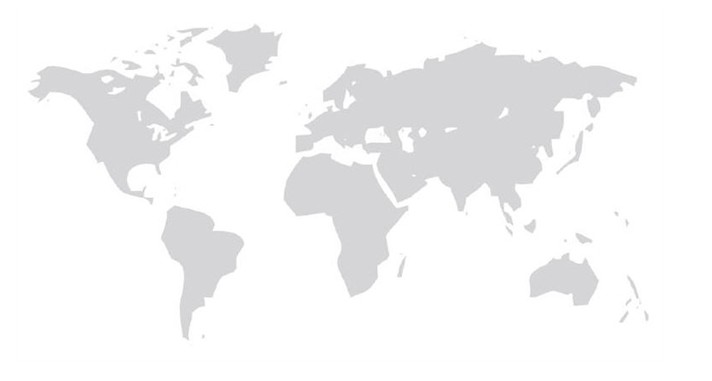Have you noted the harzardous substance of the environment?
On the restriction of use of certain hazardous substances in electrical and electronic equipments
From July 1,2006 the new products listed in the European Union banned contain: Lead(pb), Mercury(Hg), Cadmium(Cd), Hexavalent Chromium(Cr6 ),Polybrominated biphenyls(PBBs),Polybrominated diphenyl ethers(PBDEs).However,there are some exemptions, because at present there is no alternative that can be used, it is still permitted to use instructions, Once obtaining the scientific evidence and considering the precautionary principle,the EU will further expand the scopes of banned substances,The limiting value of the six banned substances contained in instructions has been Formulated in the EU Directive 2005/618/EC . The proposed maximum limit for cadmium ( in accordance with the EU Directive 91/338/EEC ) is 0.01% and the maximum limit of other five banned substances is 0.1% in each one. These limits apply to all electrical and electronic equipment components, exceps the exempted items.
Application Scope of RoHS Restriction
The1,2,3,4,5,6,7 and 10 category commodity covered in 2002/96/EC (WEEE) Directive, the electrical and electronic equipments, of DC voltage is less than 1500V, AC voltage is less than 1000V, and household light bulbs and lighting facilities.
* It is not applicable to maintenance components or recycled parts of electrical and electronic equipments that are launched into market before July 1, 2006.
* Equipments,weapons,munitions and war material that are security related to protect the interest of members countries. Fixed indus-trial equipment and W-filament lamp does not apply.
* A total of 25 countries, including the original 15 Eumember states and the 10 countries joining the European Union in 2004, willcontinue to impose restrictions on electrical and electronic products.
Directive 2002/96/EC on Waste Electrical and Electronic Equipment (WEEE) Directive and the extension of 2003/108/EC
Directive covers almost all of the following 10 categories of electrical and electronic equipments. The Directive aims to enable vendors to take their own financial responsibility to recycle and reuse of electrical and electronic equipments. Manufacturers,
brandmanufacturers (including the retailers selling its own brand products), importers and exporters are required to meet these new
requirements of EU on these electrical and electronic equipments. The WEEE Directive and extension 2003/108/ EC was announced implementation by every member of European Union from August 13, 2005.
* In view of ten newly joining countries, extend the time limit as described below:
Twenty-four months: The Czech Republic, Estonia, Hungary, Latvia, Lithuania and Slovakia (2004/312/EC); Cyprus, Malta and Poland (2004*486/EC)
The 10 categories commodities covered by WEEE directive
※ Large household appliances, eg refrigerators
※ Small household appliances, eg vacuum cleaners
※ IT and telecommunications equipment, eg mobile phones
※ Consumer equipment, eg televisions
※ Lighting equipment, eg fluorescent
※ Electrical and electronic tools (with the exception of large-scale stationary industrial tools), eg the impact drill
※ Toys, leisure and sports equipment, eg video games
※ Medical devices (with the exception of all implanted and infected products)
※ Monitoring and control equipment
※ Automatic dispensers, eg coin machine drinks
91/338/EEC Cadmium Directive 91/338/EEC
The Directive, which is enacted by EU in 1991, is about restrictions on the use of cadmium in pigments, dyes, stabil-izers and the plating. The Directive regulates that cadmium level must not exceed 0.01% (100 ppm) in liquid coatings and plastics products (regardless of the water or oily coating), and prohibits the use of plating cadmium in specific equipments.
Batteries directive
The Battery Directive that is currently implemented is Directive 91/157/EEC and extensions 98/101/EC and 2002/525/EC.
From January 1, 2000, Directive prohibits the sale of batteries and accumulators containing more than 0.0005% mercury ( mercury content is not more than 2% except for the button batteries).
Make special symbols on batteries or accumulators, whose heavy metal content is more than a certain level (Cd>0.025%. Lead>0.4%), to indicate that they need to be indivi dually recovered.
EU Directive 93/86/EEC requires marking out heavy metal content on the batteries tag and symbols that can not be mixed treated with household garbage.EU Directive 2002/525/EC prohibits sales of the metal cadmium batteries for electric vehicles from January 1, 2006, which has been approved by the European Parliament and the European Council.
The new Batteries directive 2006/66/EC has been approved by the EU parliament and the EU Council on July 6 , 2006. The portable batteries or accumulators, including those incorporated into appliances, that contain more than 0.002% of Cadmium by weight will be prohibited on the market from September 26, 2008.
Packaging and packaging waste directive 94/62/EC
Directive mainly regulates that packaging material shall not contain heavy metals harmful substances and makeclear recycling and reuse goals of packaging materials and waste. The Directive is published In the official publications on December 31, 1994, and formalizes the formal EU law on June 30, 1996. Packaging waste directive 94/ 62/ EC has been revised on February 11, 2004, and the main contents of the new Directive 2004/12/EC are as follows: Restrictions on the content of heavy metals harmful substances: lead, cad-mium, mercury, hexavalent chromium aggregates may not exceed 0.01% (W %).
The use of the above-mentioned heavy metals will be completely prohib-ited before 2010.
Require the minimum reproduction rate of all Member States to be 60%,and recy cling rate to be 55 -80% before December 31, 2008. For the smallest material recycling rates, please refer to table 1-6. |



